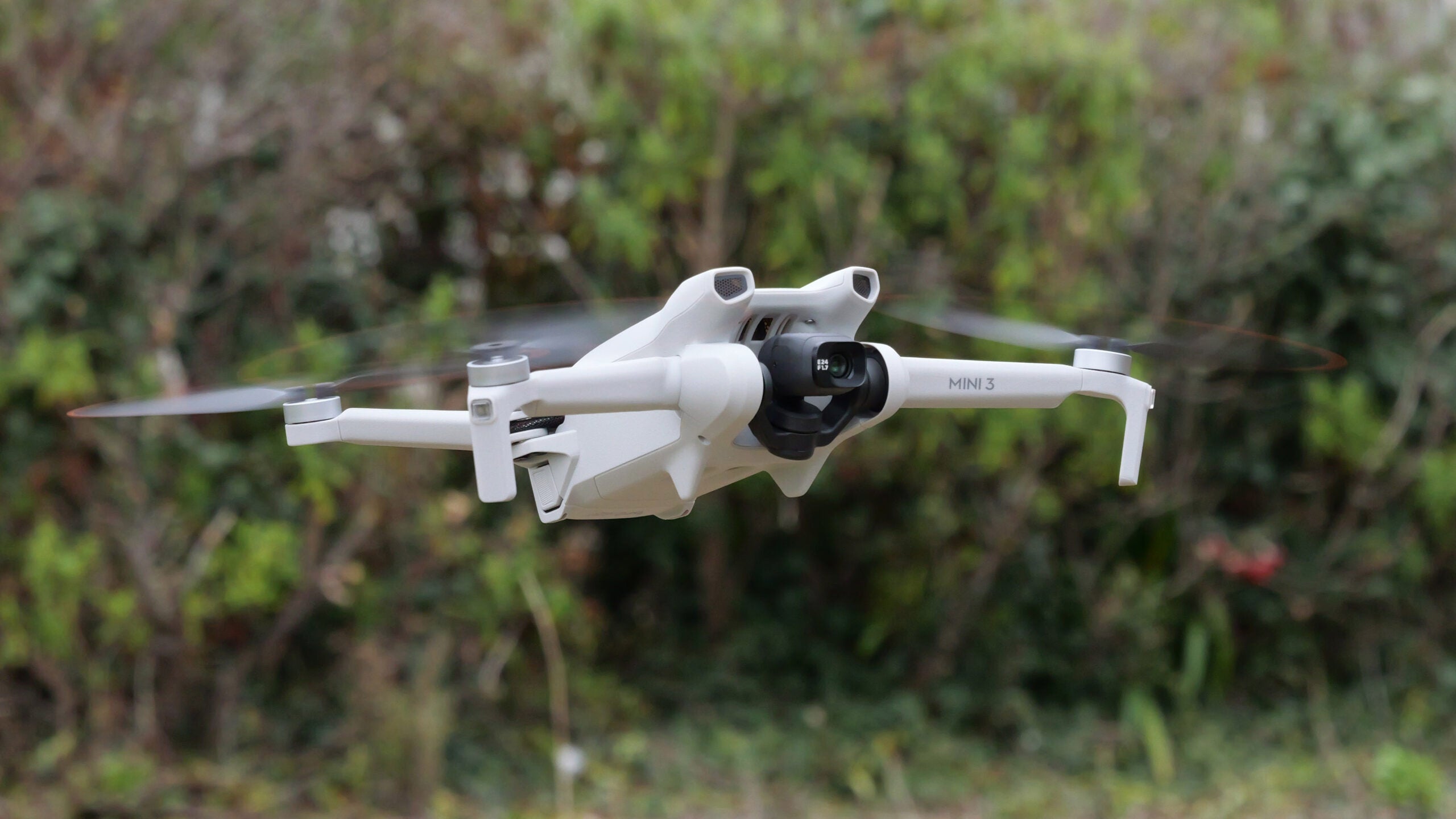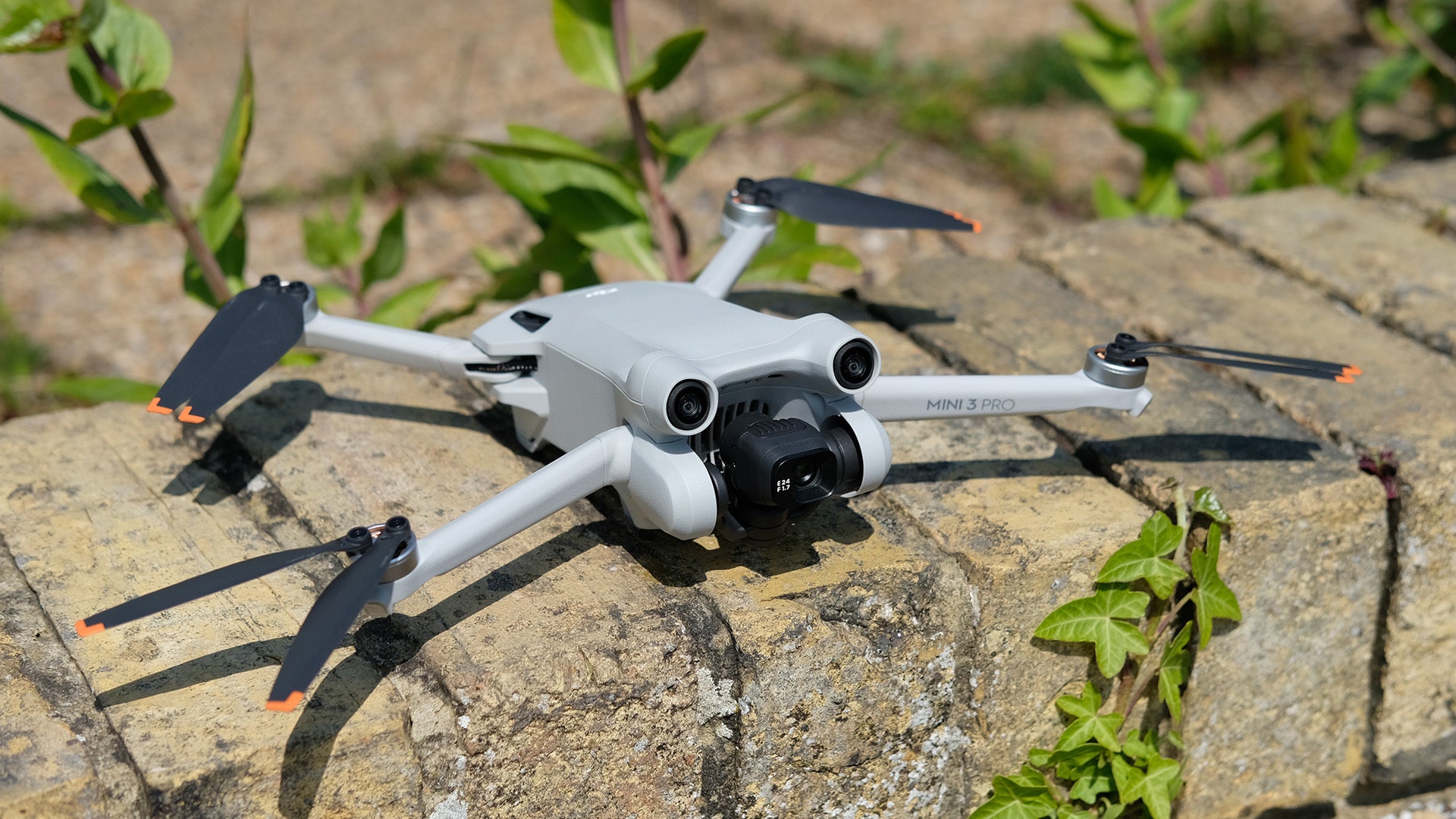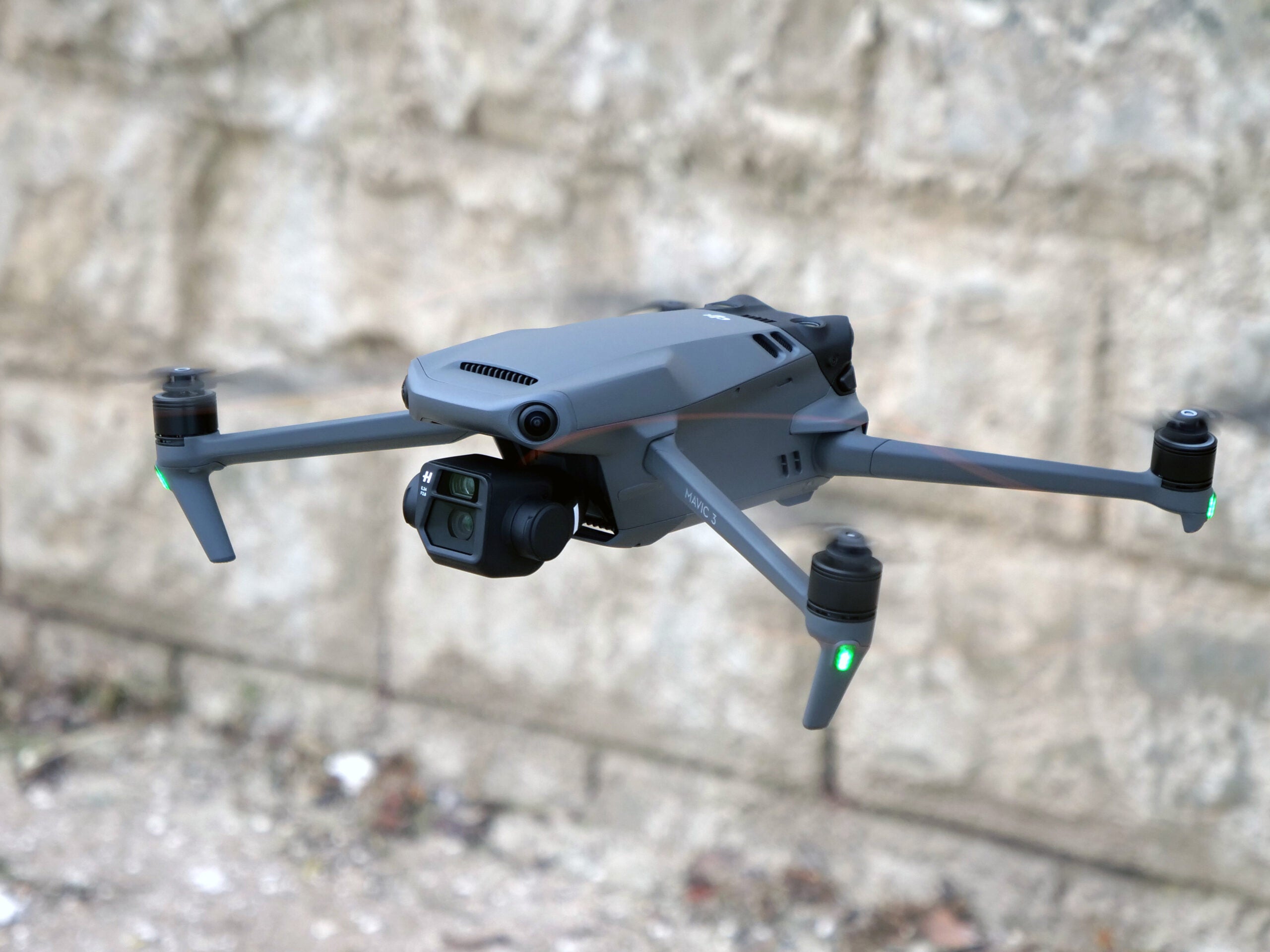DJI Mini 4 Pro Review
A fly-anywhere drone for hobbyists and professionals
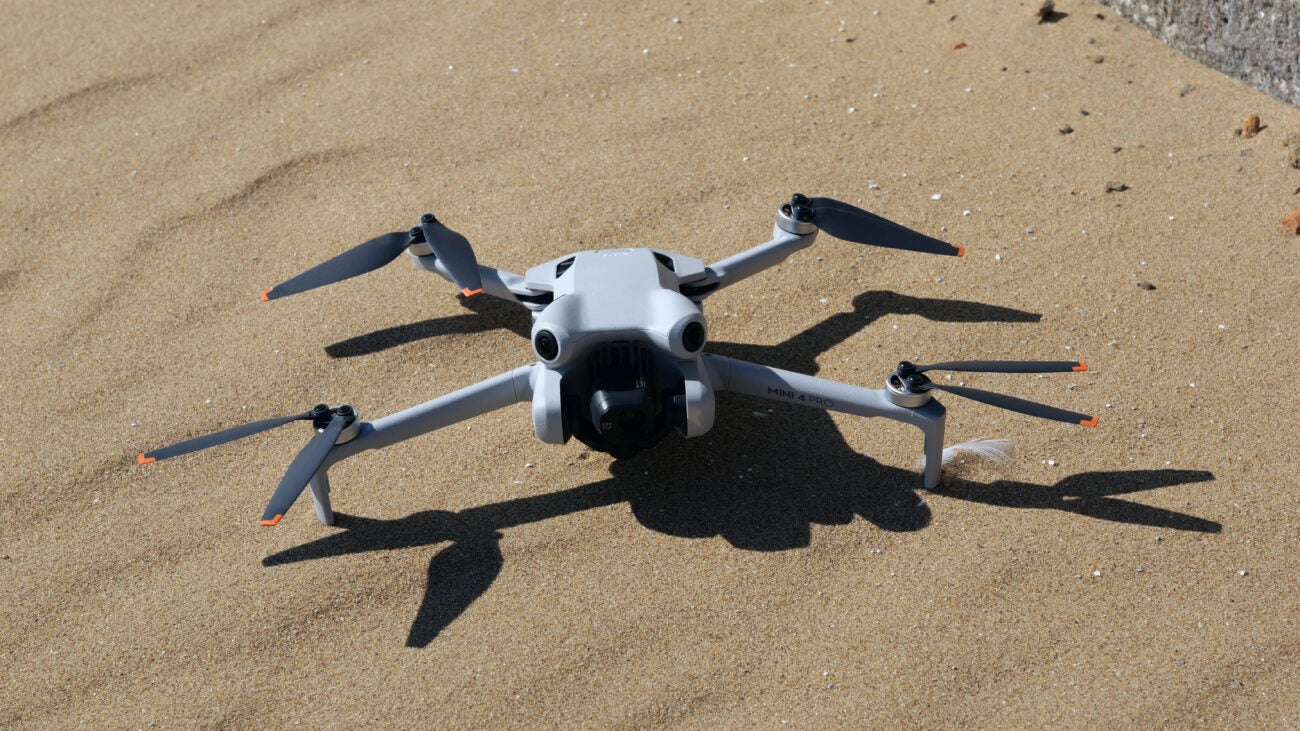
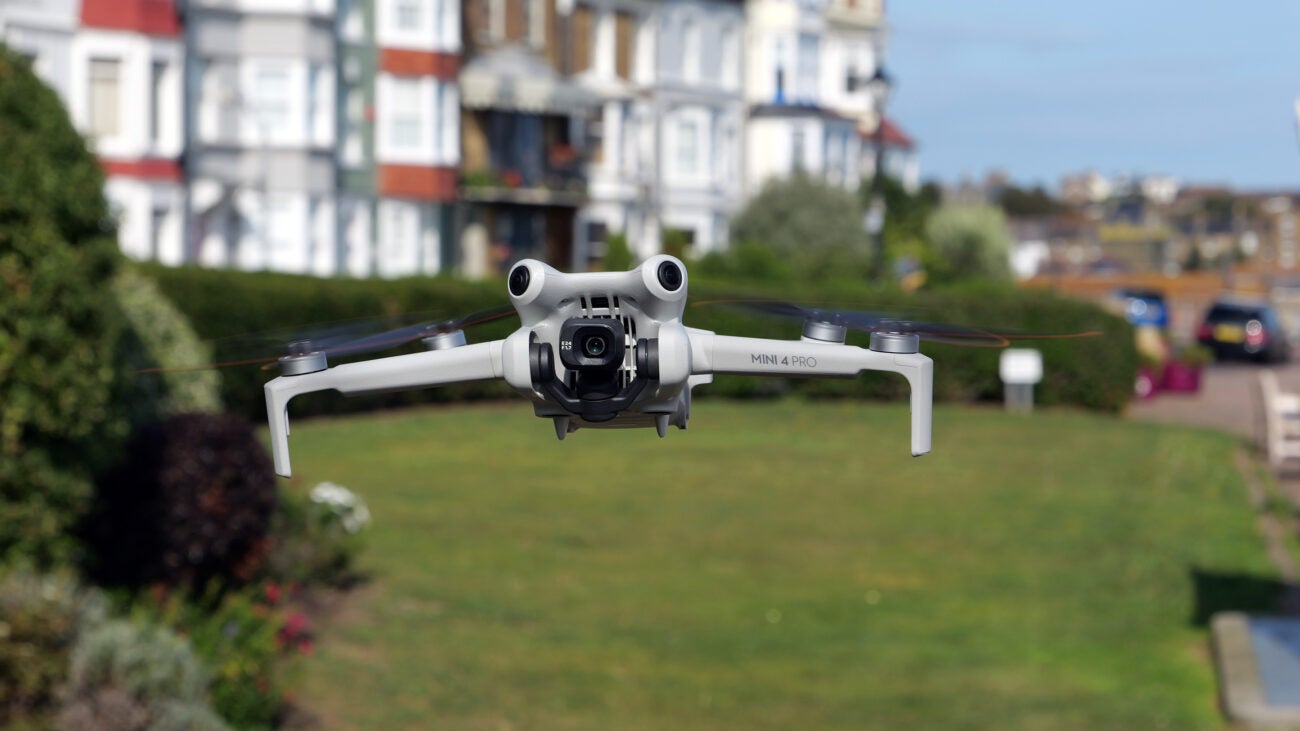





Verdict
The best ultralight drone receives a raft of improvements in its latest iteration, the DJI Mini 4 Pro, cementing its spot as a go-anywhere, fly-anywhere model for demanding hobbyists and professionals alike.
Pros
- 249g weight circumvents most drone restrictions
- Omnidirectional vision sensors
- Excellent image quality
Cons
- Not cheap by small drone standards
- Average low light image quality
Key Features
- 34-minute battery lifeA full charge delivers a generous supply of airtime
- Four-way obstacle avoidanceNew vision-based system to spot hazards to front, rear, sides or below
- 1/1.3-inch CMOS image sensorSame sensor as Mini 3 Pro but now supports 4K/100fps
Introduction
The DJI Mini 4 Pro is a new iteration of the sub-250g Mini line, offering a number of small but significant improvements at a slightly higher price than the DJI Mini 3 Pro.
One key point to consider here, particularly for potential buyers based in the UK, is that the Mini 4 Pro maintains the 249g take-off weight, keeping it within the category of drone subject to the fewest flight restrictions under UK law.
Anything above 250g can’t legally be flown within 50m of uninvolved people or above crowds, and must be kept at least 150m away from ‘residential, recreational, commercial and industrial sites’ – which when you think about it is almost all the places you might want to fly a drone. Because of its low weight, however, the Mini 4 Pro doesn’t have to conform to those laws, and can be flown in parks, on beaches and over buildings and people (but still not over large crowds).
Do the DJI Mini 4 Pro improvements make it the best small drone around? I took it to the skies of southeast England in a quest for the answer.
Design and build quality
- Weighs 249g
- Folds to pocketable size
- Choice of remote controls
Like its Mini predecessors, the DJI Mini 4 Pro collapses down to a tiny size. With its arms and propellers fully folded in, it’s just 148 x 94 x 64mm – small enough to fit into a large coat pocket.
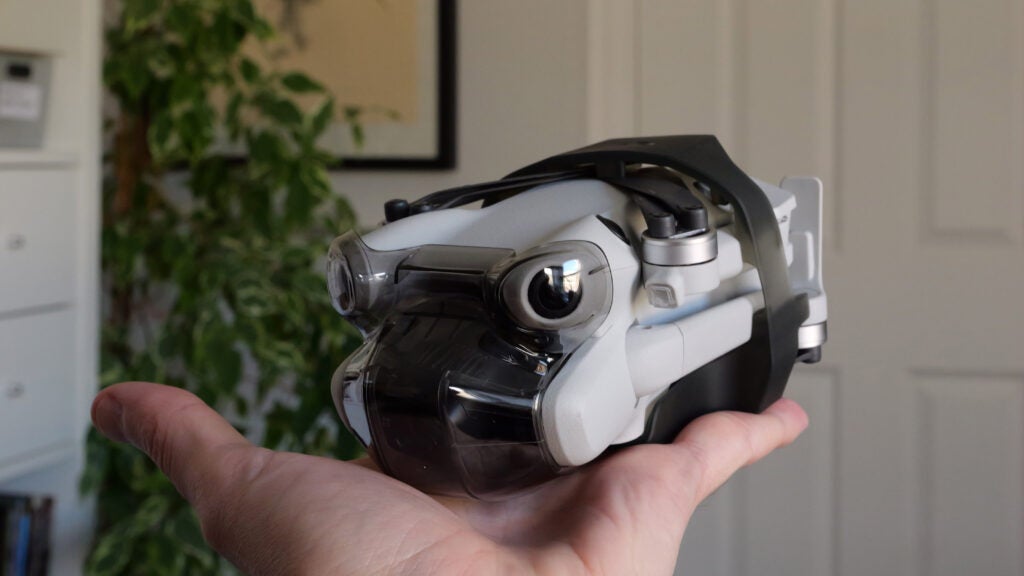
It comes with one plastic cover to protect the delicate camera and gimbal, and another to keep all the propellers tucked away and out of trouble. The whole thing is constructed of lightweight plastic to achieve that aforementioned sub-250g weight but feels tough enough to withstand the rigours of frequent use and transport.
That’ll be especially true if you plump for the £979/$1159 Fly More Combo package, which includes a well-padded shoulder bag for carrying around the included drone, three batteries, a charging hub and the DJI RC 2 controller. This is the version that I was sent, and I found the RC 2 controller’s 5.5-inch 1080p touchscreen to be excellent in terms of brightness, clarity and size.
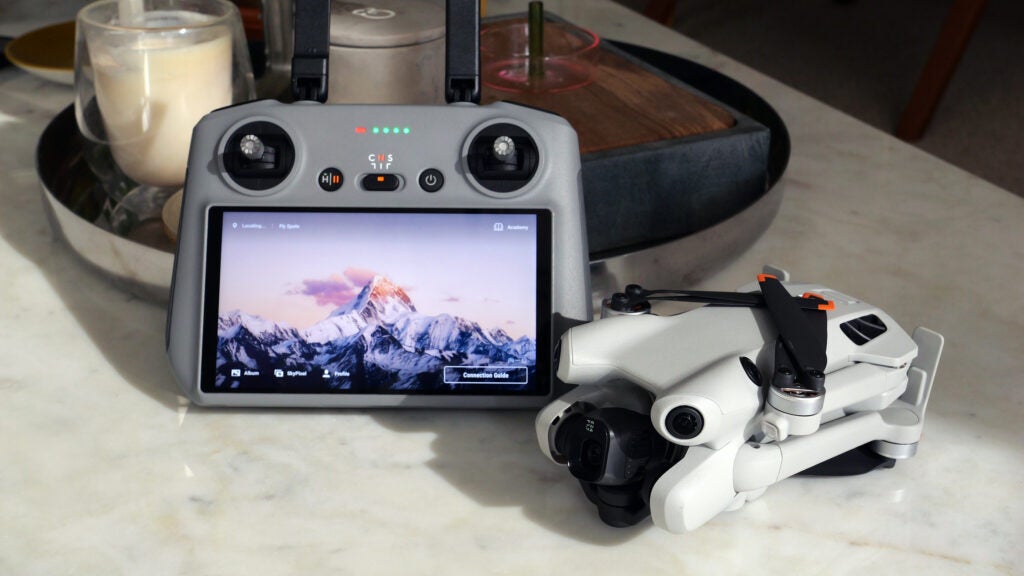
You can also purchase the DJI Mini 4 Pro with the older, screenless RC-N2 controller for £689/$759 (using your smartphone as the screen and control software), or with just the RC 2 controller for £869/$959. Even the cheapest option is quite a lot to pay for a small, lightweight drone, but the build quality is impressive.
For those on a tighter budget who want a sub-250g DJI drone, the DJI Mini 3 Pro remains on sale (from £639/$599), as does the DJI Mini SE (£285 for the Fly More Combo), DJI Mini 2 SE (from £309/$300) and DJI Mini 3 (from £429/$449).
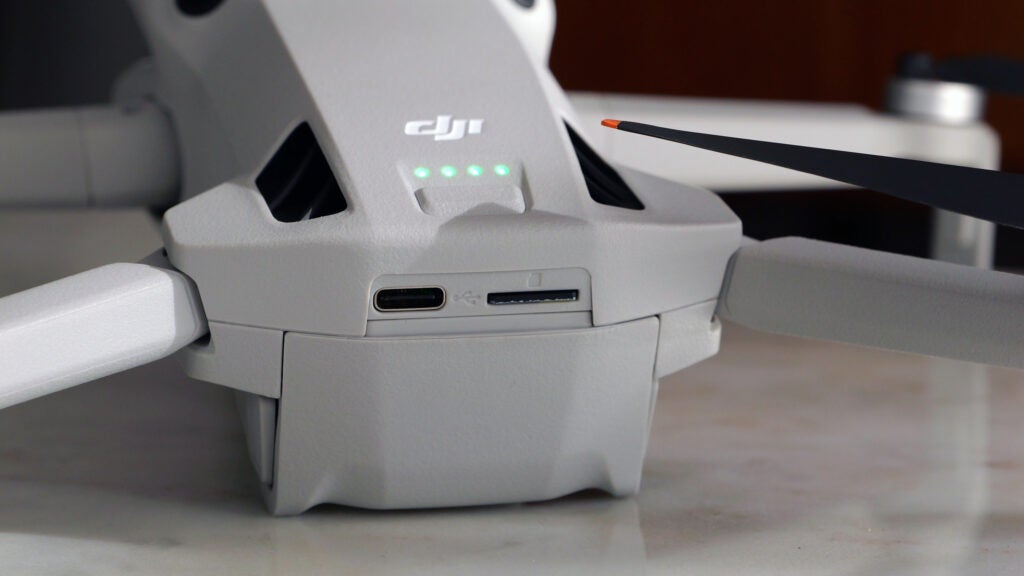
If you don’t buy the charging hub, batteries can be charged through the drone’s USB-C port, which is also used for data transfer. There’s a MicroSD card slot too, and you’ll want to use one to bolster the 2GB of built-in storage – it’s not enough room for more than a few short minutes of 4K video.
Features and flight performance
- 34 minutes of flight time
- Omnidirectional collision avoidance
- ActiveTrack object tracking
The flight setup, app and controls will be familiar to anyone who’s flown a DJI folding drone in recent years, but even newbies will have little trouble picking things up within a couple of test flights.
DJI has spent years assembling a really robust, user-friendly and safety-first flying and control system, with take-off and landing essentially automated and a gaggle of sensors to keep track of your drone’s movements, location, remaining flight time and more.
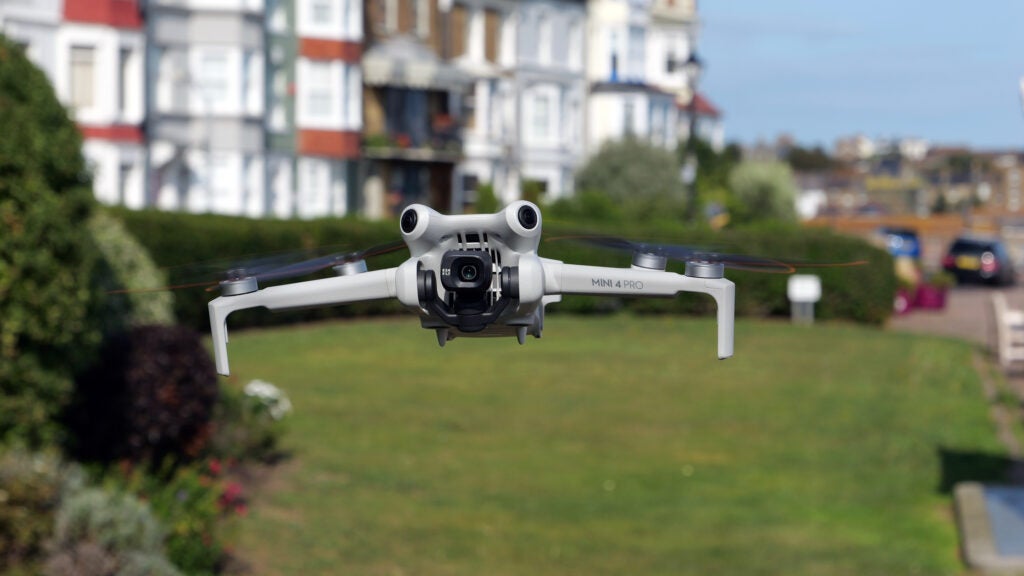
A full battery will give the DJI Mini 4 Pro up to 34 minutes of flight time, which I think is impressive – albeit the same as the Mini 3 Pro. The Mini 4 Pro can travel quickly (up to 16m/s in S mode) but the simple twin-stick control setup is responsive and allows for precise movements, while the four motors are strong enough to keep the drone steady in winds of up to 10.7m/s (or about 22mph). So despite its lightweight build, it’ll provide a stable platform for photos and video in all but very blustery conditions.
Like the Mini 3 Pro, it has obstacle avoidance via vision sensors, but here they cover more angles and directions, with upwards added to front, back, sideways and downwards. They all seem to work well from my testing, but DJI warns that they’re not as effective in low-light conditions and I suggest that you exercise care when flying around trees, overhead cables and the like; smaller obstacles like wires and twigs will be trickier for the sensors to pick up, but can still send your drone dropping to the ground like a rock.
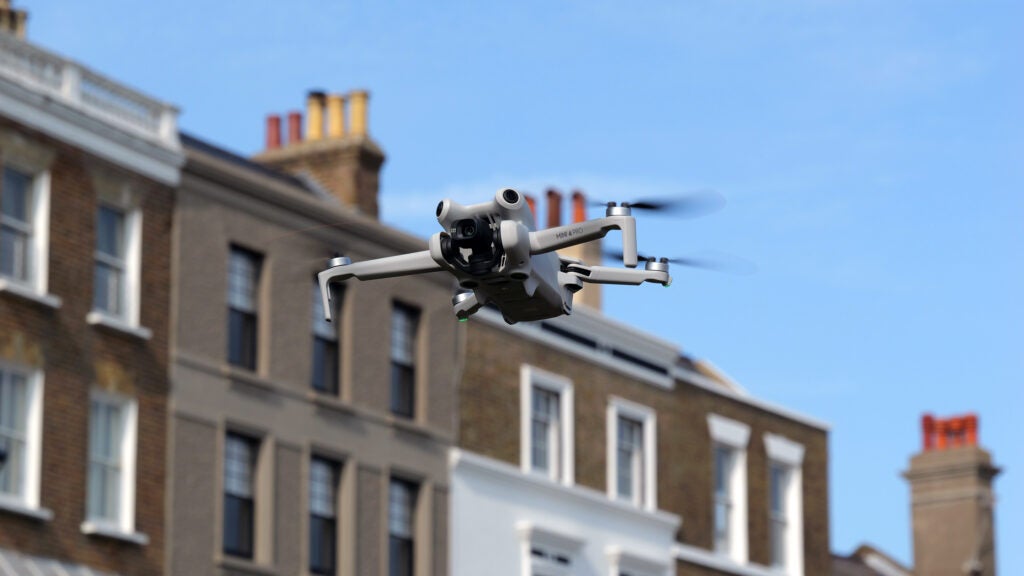
As a consequence of its boosted anti-obstacle tech, the DJI Mini 4 Pro offers a slightly improved version of the ActiveTrack feature included on the Mini 3 Pro. ActiveTrack lets you drag a box around an on-screen subject; the drone then keeps the camera trained on that subject even if you move the drone in a different direction.
ActiveTrack 360 allows the drone to automatically circle around the subject while moving up and back or forward; the sensors help it to avoid crashing while doing so. It’s great for capturing impressive solo shots while you’re biking, hiking or driving.
Video and photo quality
- 4K at 60fps for normal video, 100fps for slow motion
- 10-bit colour via D-Log M
- Night Mode for clearer low light shots
The DJI Mini 4 Pro has the same gimbal-stabilised 12MP, 1/1.3-inch CMOS camera sensor as the Mini 3 Pro, but image quality is definitely superior on this new model.
In terms of resolution and frame rate, both models record regular 4K video at up to 60fps, but in its slow-motion mode the DJI Mini 4 Pro can also capture 4K at 100fps (or 1080p at 200fps), allowing for smoother slow playback.
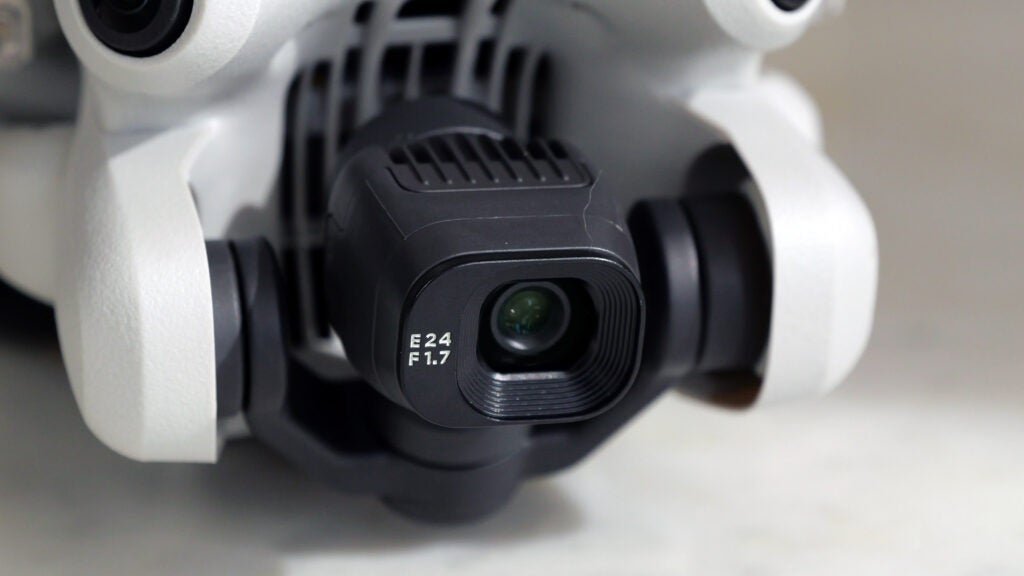
The new imaging processor now supports 10-bit colour rather than the 8-bit offered by the Mini 3 Pro through the D-Log M profile (an option that sits alongside Normal and HLG profiles), which means a wider gamut of colours and greater dynamic range for users willing to colour grade and correct their own footage. Recorded footage looks fantastic for a small drone. Footage shot in Normal and taken straight from the camera is fine, however – and I don’t doubt most users will find it perfectly acceptable.
Photos can be captured at 12MP or 48MP resolution due to the Quad Bayer sensor, but when shooting in DNG RAW and processing our files in Lightroom I found the difference isn’t really noticeable. Images are of a good quality generally, akin to a higher-end smartphone, and I like the fact you can rotate the camera 90º to shoot ‘tall’ 9:16 photos (and videos) for social media use.


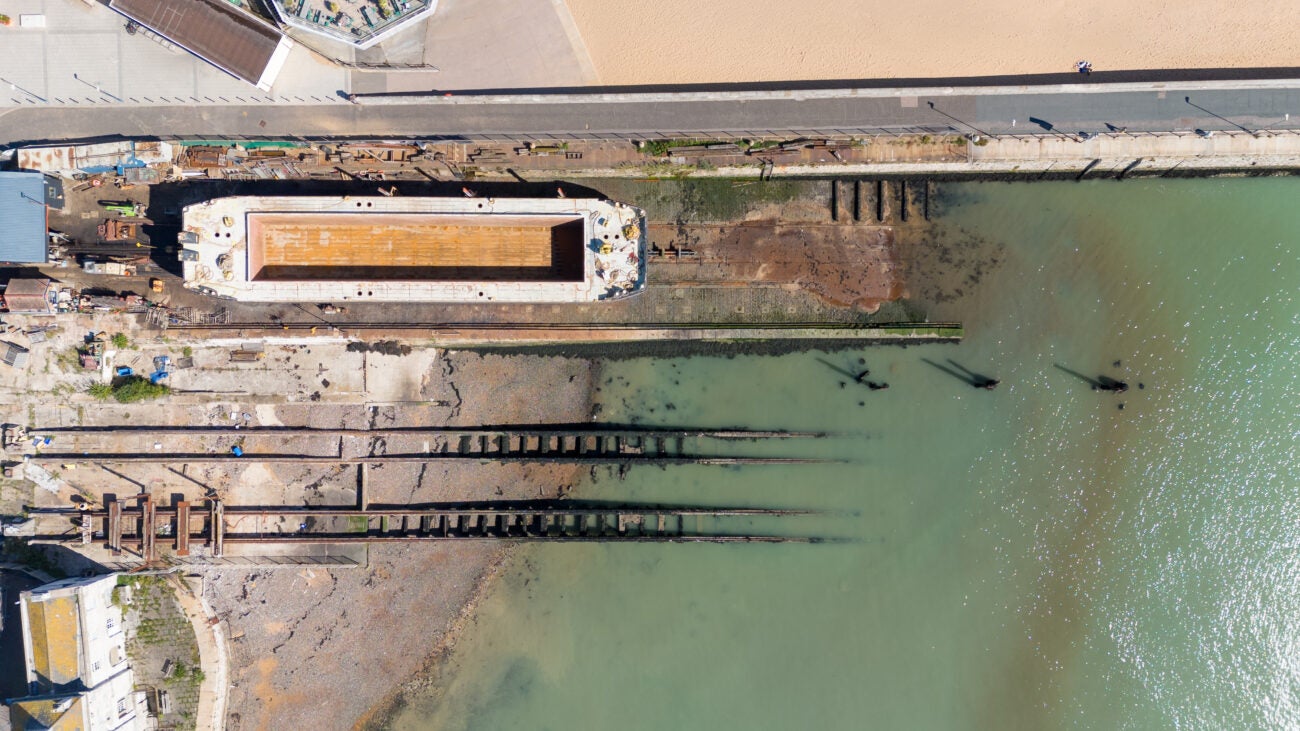
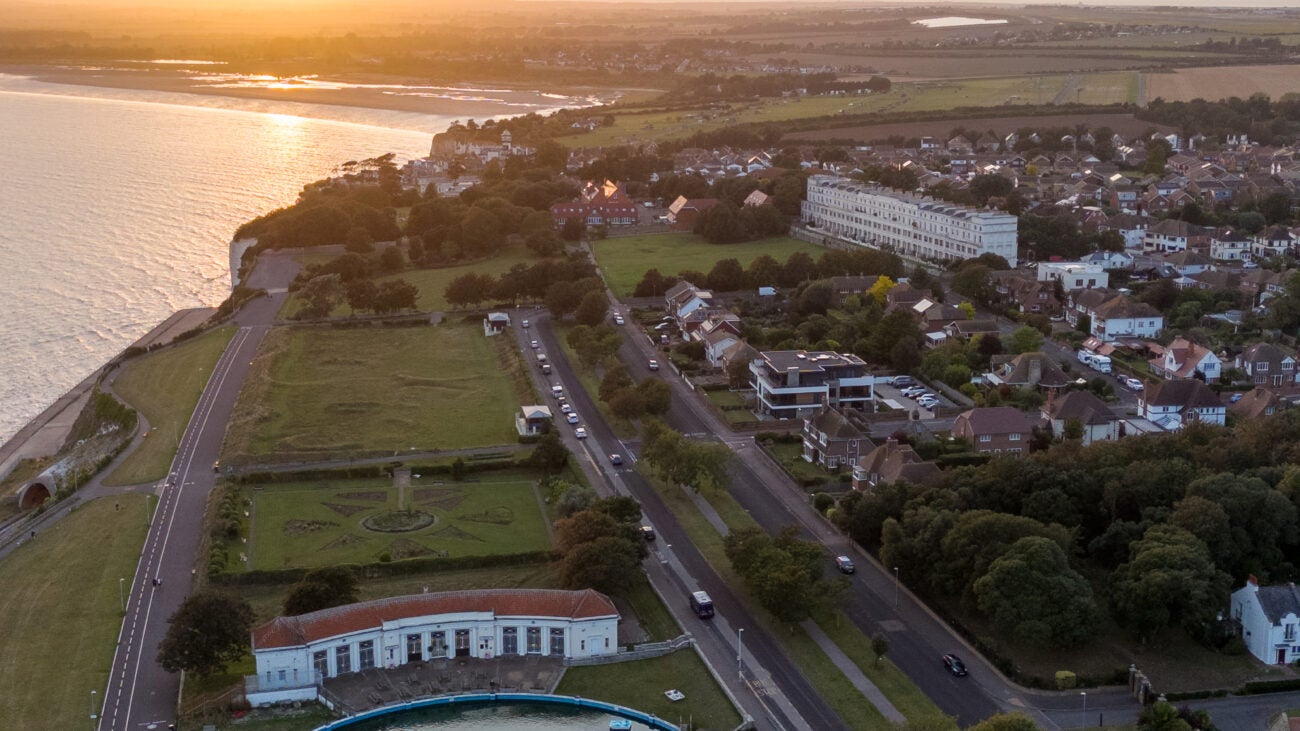
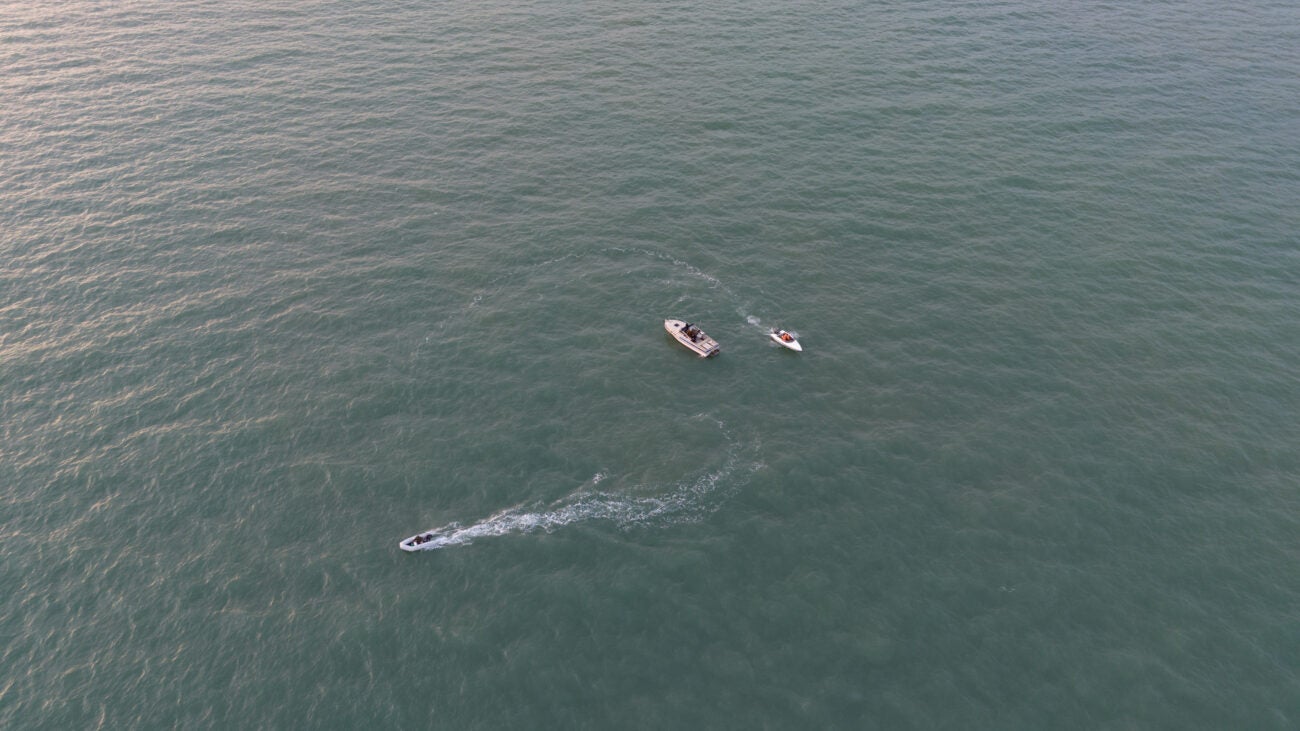
Image quality in low light is still a bit hit and miss, especially when compared to results from the larger sensor cameras on DJI’s Mavic models, but the new dual native ISO and Night Mode offer slightly better clarity and lower noise for dusk, twilight and after-dark shooting.
Latest deals
Should you buy it?
You want the best quality fly-anywhere drone
The DJI Mini 4 Pro is the best sub-250g drone around in terms of image quality and obstacle avoidance, and particularly attractive to UK users.
You want the top image quality from a DJI drone
With their larger sensors and telephoto cameras, the DJI Air 3, Mavic 3 and Mavic 3 Pro drone models remain superior choices for image quality.
Final Thoughts
The quality jump from the DJI Mini 3 Pro to the Mini 4 Pro might not feel huge – but then neither is the price tag. What DJI has done here is take the best sub-250g drone around and make it even better, improving its obstacle sensing and image quality in meaningful ways.
For users looking for an ultralight drone that can be flown almost anywhere without making big compromises on camera or flight performance, this is the top model we’ve seen to date. Check out our Best Drone guide for more options.
How we test
We thoroughly test camera drones with hours of flight time, as well as capturing sample photos and videos. We’ll always tell you what we find and we never, ever accept money to review a product.
Sample shots taken
Battery fully tested
Flight safety features fully tested
FAQs
The DJI Mini 4 Pro can reportedly fly up to a 500-metre height, although some countries have restrictions on how high you can fly a drone.
No, the DJI Mini 4 Pro is not waterproof, so it’s best to avoid water.




